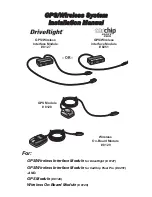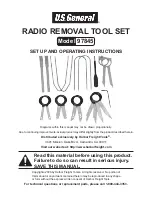
4. ASSemBly
4.1.
Headband assembly needs to be fitted into the helmet. Refer to fig.A below. Ensure orientation is correctly followed.
5. inStruCtionS
R
WArning!
Before using the helmet for welding ensure you have read and understood the safety instructions in Section 1.
importAnt:
Before the mask can be used the headband must be adjusted to fit the user properly.
5.1.
ADJuSting tHe fit of tHe Helmet
5.1.1.
The overall circumference of the headband can be made larger or smaller by pushing in and rotating the knob on the back of the
headband (fig.1.A). This can be done whilst wearing the helmet and allows just the right tension to be set to keep the helmet firmly on
the head without it being too tight.
5.1.2.
If the headband is riding too high or too low on your head adjust the strap which passes over the top of your head. To do this release
the end of the band by pushing the locking pip out of the hole in the band. Slide the two portions of the band to a greater or lesser
width as required and push the locking pip through the nearest hole (fig.1.B).
5.1.3.
Test the fit of the headband by lifting up and closing down the helmet a few times whilst wearing it. If the headband moves whilst tilting,
re-adjust it until it is stable.
5.2.
ADJuSting Helmet tilt
5.2.1.
Loosen knob C (fig.1) on both sides and gently pull up tabs to pull locating pins out of location holes (fig.1). Adjust angle of tilt by
placing each one back in desired location hole. Ensure same hole is selected each side. Tighten knobs C (fig.1).
5.2.2.
SeleCting SHADe leVel
5.2.3.
Refer to the shade guide in Section 8 and adjust the knob on the side of the helmet to the correct setting (fig.2).
5.3.
grinD poSition
5.3.1.
Turn the shade knob (fig.2) anti-clockwise until it clicks into the grind position. When grinding is finished the knob must be turned back
to the appropriate shade position before welding again. Failure to do this could result in damage to your eyes.
5.4.
SeleCting DelAy time/reSponSe time
5.4.1.
The delay time in which it takes the lens to change from dark to light or vice versa can be varied from 0.1sec to 0.9 sec, this
adjustment is carried out by turning the delay time knob on the cartridge (fig.3).
5.5.
SenSitiVity
5.5.1.
For normal ambient light conditions set the sensitivity knob to the high setting (fig.3).
5.5.2.
For conditions where there is an excess of light, which may affect the performance of the lens, turn the knob to the low setting.
Original Language Version
© Jack Sealey limited
S
01001.V3 | Issue:1 06/12/19
fig.A
fig.1
fig.2






















